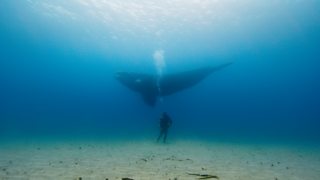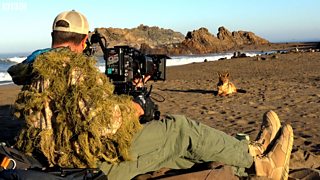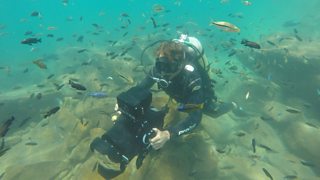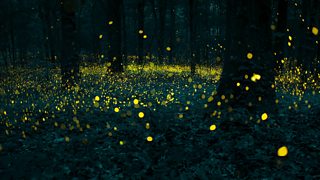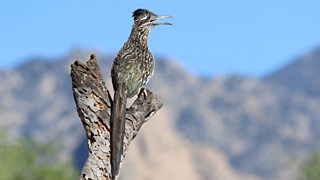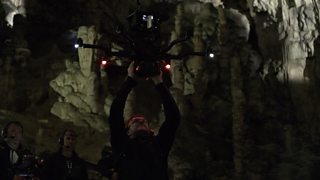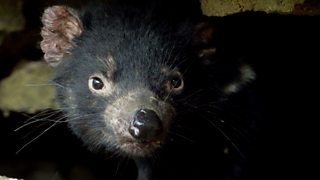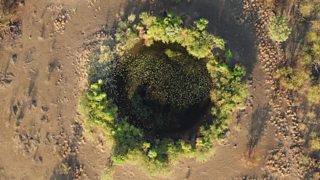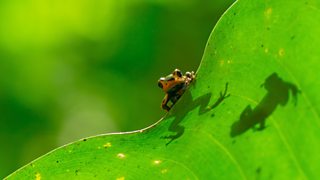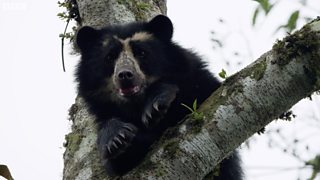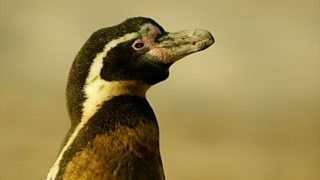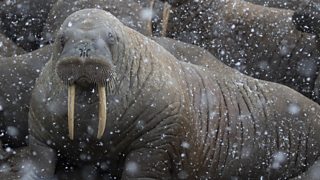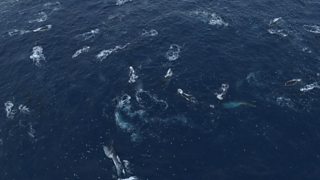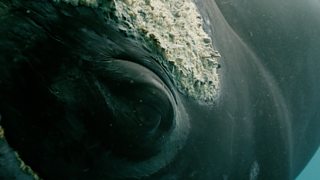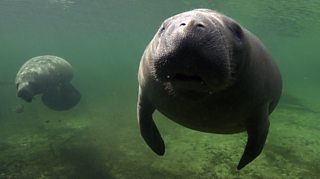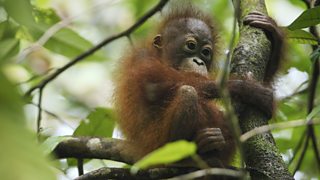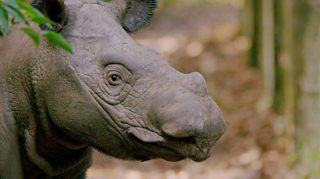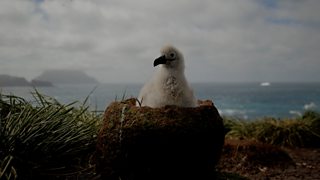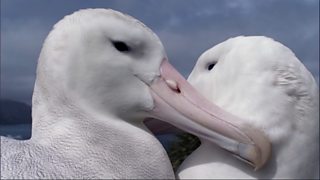A Peek-a-Boo veteran in the jungles of Australia
By Jess Webster, Junior Researcher on Seven Worlds, One Planet
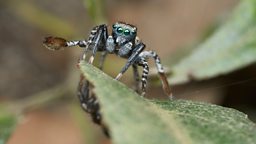
One of the most extraordinary behaviours of the series took the Seven Worlds team into the South East Australian wilderness, where they set up base for three weeks in a bid to film one of the continent’s most peculiar residents, the jumping spider Jotus remus.
this charismatic critter has gained a name for its fascinating courtship display
Discovered only a few years ago, this charismatic critter has gained a name for its fascinating courtship display and the crew were aiming to become some of the first people ever to witness the spectacle up close. But to capture this rarely observed behaviour on camera, they needed to set up a miniature film studio on location, where they were joined by world expert Jurgen Otto. Once the crew had created their forest film set, they waited with much anticipation for the performance to begin.
Unlike other species of jumping spider, males of Jotus remus possess two feathery, paddle shaped limbs, which they use to wave gingerly at females from the undersides of leaves in an enthralling display of ‘Peek a Boo.’ If the female has not mated before, she may be seduced by the male’s paddle waving antics, but at the very least, they could prevent him sustaining a nasty nip from this powerful femme fatale; it turns out a fluffy paddle is not so easy to catch.
If she is intrigued by his mysterious moves however, the female may allow these hide and seek interactions to continue, only ever getting to glimpse the infamous leg paddles. After spending the next few minutes showing off all the waves in his repertoire, the male may finally have earned his reward and can join the female on the top of the leaf to mate before disappearing into the shadows.
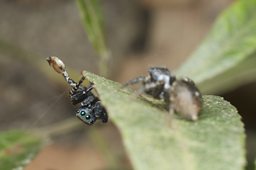
Our knowledge surrounding this unusual behaviour is owed to crew member Jurgen Otto of Australia’s department of Agriculture. Aside from his day job identifying mites, Otto developed a strong interest in the strikingly colourful group of spiders known as peacock spiders after coming across one in 2005.
He even has his own spider lab where he studies their behaviour, before returning his hairy subjects back into the wild
From that point on, he has dedicated all his spare time to cataloguing the more than 70 species of peacock spider we see today, learning about their characteristics and behaviour through intense study and recording his research through film, photography and scientific publications.
Otto conducts his research in his own time, investing thousands of hours on this passion project. He even has his own spider lab where he studies their behaviour, before returning his hairy subjects back into the wild - even if that means a 14 hour drive.
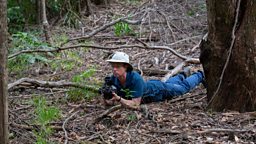
It was off the back of a camping trip to Barrington Tops National Park in 2014 however when Otto had a chance encounter with a different kind of arachnid. Intending to have a break from all spider related activity, Otto deliberately left his camera at home so he would not be tempted to photograph any eight legged individuals he may stumble across.
Otto came across a small spider on his tent bag that had unusual paddle shaped limbs
After returning from his trip however, Otto came across a small spider on his tent bag that had unusual paddle shaped limbs. Determined to find out more about this tiny hitch hiker, Otto returned to the camp site just two days later where, after six hours of searching, he found more of these strange creatures and with that the species was formally named Jotus remus, with remus meaning ‘paddle’ in Latin. But even with a larger group to study, Otto was still unable to deduce the function of the paddle appendage until he studied the interaction between males and females, where he witnessed the bizarre paddle waving seduction dance. Otto, after 14 years of studying spiders, describes Jotus remus as ‘Probably one of the most fascinating spiders ever found.’
Along with collaborator David Hill, Otto’s findings are published online in the journal . More about Otto’s work can be found on his website; .

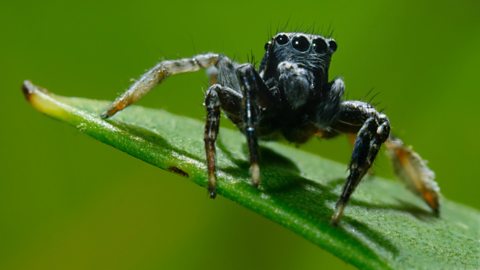
Mate or die trying
A male Jotus spider waves it paddle-like limbs to attract a mate.
On location
-
![]()
The crew's most memorable filming moments
Read the article
-
![]()
The quest to film the elusive brown hyena
Watch the video
-
![]()
A fish tale with a twist
Read the article
-
![]()
Tales from Tennessee
Red the article
-
![]()
Firefly fireworks
Read the article
-
![]()
Filming in Frozen Swamps
Read the article
-
![]()
The roadie experience
Read the article
-
![]()
Drama in the troop
Read the article
-
![]()
Flying underground
Watch the video
-
![]()
Filming dragons
Read the article
-
![]()
Devils on the edge
Watch the video
-
![]()
How drones helped reveal the wonders of Seven Worlds
Read the article
-
![]()
A Peek-a-Boo veteran in the jungles of Australia
Read the article
-
![]()
Finding and filming wildlife in the jungle
Read the article
-
![]()
Walking with cats
Read the article
-
![]()
A bear called Paddington
Watch the video
-
![]()
Hiding in plain sight
Watch the video
-
![]()
Walrus on the edge
Read the article
-
![]()
Bears in the Valley of the Geysers
Read the article
-
![]()
The search for the fin whale
Watch the video
-
![]()
Gentle giants
Watch the video
-
![]()
Extreme parenting
Watch the video
Saving Seven Worlds
-
![]()
The last rhinos
Watch the video
-
![]()
Colliding worlds
Watch the video
-
![]()
A lifeline for the Iberian lynx
Read the article
-
![]()
Rainforest invaders
Watch the video
-
![]()
Australia's hidden past
Watch the video
-
![]()
Protecting a South American wonder of the world
Read the article
-
![]()
The vanishing forest
Watch the video
-
![]()
How you can save Asia’s jungles
Read the article
-
![]()
A sanctuary for the endangered whale shark
Read the article
-
![]()
First steps to safety
Watch the video
-
![]()
A frozen continent in a warming world
Read the article
-
![]()
The grey headed albatross faces extinction
Watch the video
-
![]()
The fisherman's good luck omen
Watch the video
-
![]()
Fur seals pups have the base surrounded
Watch the video
-
![]()
The Southern Ocean is a globally important carbon sink
Watch the video
-
![]()
An alien invader is colonising Antarctic waters
Watch the video
